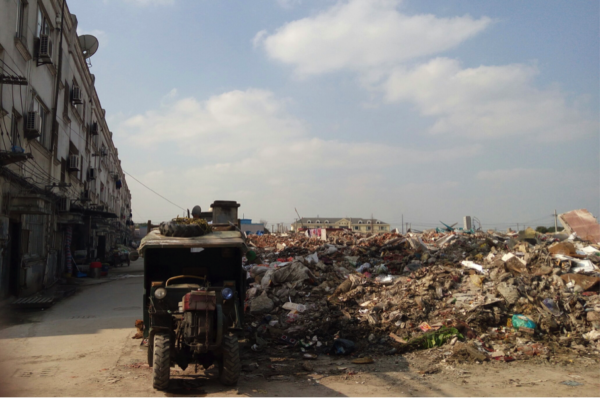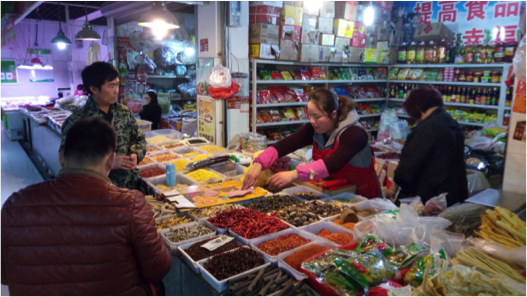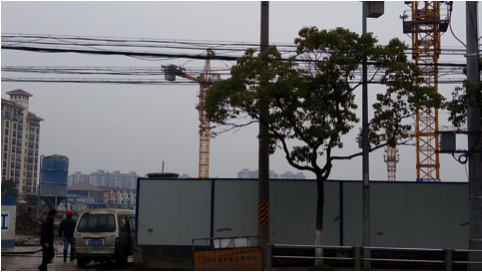Living through Uncertainty – Experiencing Urban Transformation in a Migrant Neighborhood of Suburban Shanghai
Dr. Lisa Richaud and Dr. Jie Li

Since the late nineteenth century urban transformation has been associated with mental illness. But questions around the specificity of the relationship – why does mental illness cluster in cities? what are the relations of urban poverty, deprivation, overcrowding, social exclusion, racism, and violence to mental distress? what biological and sociological mechanisms might be at stake? – have continued well into the twenty-first century. Research has identified key phenomena that tie mental illness and the social lives of cities together, with migration and stress among the factors most consistently identified: migrants into cities bear a disproportionately large share of the burden of urban mental illness; the general stress and precarity of urban living create the psychosocial basis for the development of clinical problems.
The ESRC and Newton-funded project Mental Health, Migration and the Chinese Mega-City led by Professor Nick Manning (PI) employs an ethnographic method to study on the lived experiences of migrants, migrant households, and migrant neighbourhoods in Shanghai, to draw out smaller-scale, less visible aspects that comprise the physical and technical elements of city life. This is because if mental health in mega-cities is produced by complex, multi-layered interactions of social, historical, biological, and psychological factors, then measurement and analysis require not only a horizontal, epidemiological account of maps and patterns, but also a vertical, ethnographic analysis of how migrant life is actually lived in contemporary Shanghai.
An anthropologist, Dr. Lisa Richaud, has been conducting ethnographic field work in Shanghai since the beginning of 2017 and revealed intriguing findings on migrants’ resilience in precarious urban life. Some of the key observations of her first stage field work in Songjiang, Shanghai are outlined below.
“Ten days remain before celebrations of Spring Festival as I start fieldwork in Shanghai. Here, as elsewhere in the country, this annual rhythm is rendered visible in the public spaces of the city, not only by pervasive advertisements, or by the scrolls reminding the public of official bans on firecrackers and fireworks. It is also materialized by the sudden emptiness that such an event creates in a city that has become home of some hundreds of thousands of migrants. It is made audible through questions on who is leaving the city during this particular period and who is not, where it is commonly assumed that one most likely is. Such dialogues repeatedly occur among those city dwellers who are commonly called “outsiders” (waidiren) by Shanghai-born urbanites. In Songjiang district, on the outskirts of the city, a number of stores in the usually busy “Jinhui shopping street”, also known as Tongli Road, have their iron shutters lowered. Many of these restaurants, shoe stores, hair dressers, and other small trades are run by rural-to-urban migrants. In a couple of days, some of them will drive back to their laojia or home province, while others have booked bus tickets and await the vehicle that will take them from Tongli Road to their place of origin.
Yet, Spring Festival may not be entirely responsible for the quietness and the sharp drop of business activity about which many shop owners complain. For several years, Songjiang’s Jiuting town, where the street is located, had become home of factories, many of which have suddenly been deemed illegal or responsible for environmental hazards by the local government. These industries have been compelled to shut down or to relocate themselves in other parts of the city. Plans for a remaking of the area have been under way, leading to massive destructions of factory walls, workers’ dormitories, and former peasants’ old houses, many of which had been rented to migrants. Many left the area. According to one informant – a man in his sixties, originally from Jiangsu province, who works as a street sweeper – the destructions took place last November, about two months ago. Now, Jinhui shopping street sits in the midst of these fields of rubble and wastes. And yet, many remain in Jiuting, despite the felt difficulties in keeping business alive and the possibility that few months from now, their own dwelling place will, in turn, be reduced to piles of rubble. How is everyday life lived under such circumstances, and with what consequences for mental wellbeing?”
(Edited fieldnotes, February 2017)

The progression of fieldwork in Songjiang over the months (from January to July 2017) has provided surprising answers to the questions raised at the end of this excerpt. Quickly, it became clear that there were no linear relationships between precariousness and mental ill health. The question this situation begged was not only how uncertainty affects the inner life and mental health of migrant residents undergoing such circumstances. Perhaps more important was to ask how people, many of whom have lived in the area for more than a decade, learn and develop skills to inhabit the no longer habitable, to preserve the routines of daily life alongside or within uncertainty? For people do not passively experience the transformations of their living environment. In Tongli Road, the unmaking of place – made all too visible by the aforementioned rubble fields, empty shops, or disrupted construction works – is met with uninterrupted place-making practices and adjustments to ruination. This implies for instance, crafting time-spaces of pleasurable sociality – through food sharing, casual talk, card playing or line-dancing. This also means preserving appearances of normalcy – despite the lack of customers, shops open early in the morning and close late in the evening; rituals of cleanliness are pervasive in the outdoor spaces of the neighborhood. For those with business on their hands, an openness to new opportunities – even the tiniest of them – remains.
To be sure, difficulties are felt. For months, rumors (xiaodao xiaoxi, literally “side-street news”) about the destruction of the entire neighborhood have circulated among its residents, thus causing further worries. As it turned out, Tongli Road has remained in place for another year. However, residents have to live in proximity to rubble fields and deserted rooms, where close acquaintances used to live; they have to bear the emptiness of their shops, along with the disappearance of what they nostalgically referred to as the crowdedness and “social heat” (re’nao, literally “heat and noise”) of a once vibrant neighborhood. But despite some references to the stress (yali), bitterness (ku), and boredom (wuliao) caused by the situation, more predominant was a display of resilience and a sense of endurance, as well as a claimed readiness to return to the countryside or move somewhere else if no solutions present themselves.

This is not to suggest, however, that migrants are inherently resilient. On the contrary, idioms of resilience, self-responsibility, optimism and even happiness which pervade Tongli Road’s residents’ accounts only make sense when considered in light of the intersubjective engagements that make up daily living – be it among kin, acquaintances or even customers – but also, perhaps more importantly, in light of what the environment itself affords, with its low density, its parochial spaces conducive to familiarity, friendship ties, as well as pleasurable “light-touch” sociality: one that does not imply strong mutual obligations.
What we cannot tell, however, is the extent to which a resilient approach to both everyday challenges and future uncertainties can be maintained, without causing further distress. What happens when stress can no longer be “swallowed into one’s heart”, as one informant put it? In China, official recognition of mental health issues has increased over the past two decades. Yet, while typically endorsed by middle-class, educated city dwellers, these forms of “therapeutic governance” (Yang 2017; Zhang 2017) largely bypass rural-to-urban migrants. One recurring discourse from both the municipal and police officials is that migrants do not have ”a spirit”, but only material and economic needs. They do not linger on questions of stress, or experience mental health problems, nor do they need mental health support, because their primary focus is on securing work and income and meeting their material needs. In a Shanghai region where there is continuous development somewhere else, these needs are thought to be easily met elsewhere without consequences on the mental health of migrants. Our research findings from the Tongli Road area suggest that we should be even more cautious not to view migrants’ labor of resilience and self-responsibility as a form of everyday heroism, which would also constitute a convenient solution in a context of a lack of care from the state.
Dr Jie Li and Dr Lisa Richaud are researchers on the ESRC-funded project, Mental Health, Migration and the Chinese Megacity. All of the images in this blog are by Dr Lisa Richaud.
References
Yang, Jie. 2017. Mental Health in China: Change, Tradition and Therapeutic Governance. Cambridge: Polity Press.
Zhang, Li. 2017. “The Rise of Therapeutic Governing in Postsocialist China”. Medical Anthropology 36, no. 1: 6-18.